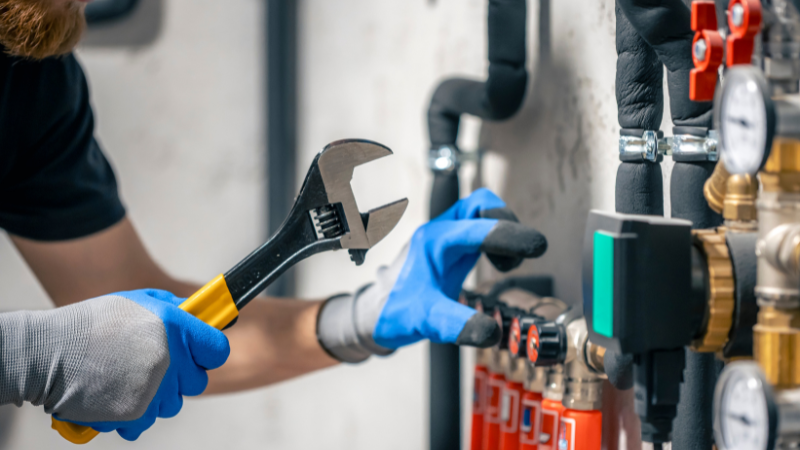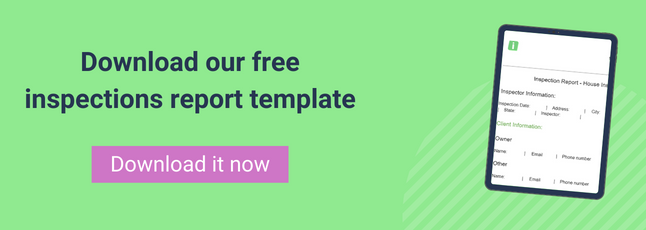
The right to enjoy common elements is often what pushes individuals to buy homes in community associations. For residents to enjoy these spaces safely, performing regular HOA common area maintenance is essential. Board members are usually responsible for this task along with management companies. Unfortunately, inadequate maintenance is far too often a source of concern and issues in communities.
This post will go through basic definitions and examples of chores that need to be performed. It will also present risks that arise from unmaintained common areas. Finally, it will focus on the importance of communication, inspection, and reserve studies.
What is an HOA common area?
An HOA common area is any space or property accessible to all members of the community. It doesn’t include individual lots owned by residents. Common areas consist of amenities such as swimming pools or clubhouses. It also refers to regular utilities such as sidewalks, fences, or lighting. Small HOAs may have few common spaces compared to larger ones. Regardless of the size of the association, proper preservation and safekeeping of common areas are imperative.
Who is responsible for HOA common area maintenance?
In general, the HOA board is responsible for maintaining common areas. Sometimes, the board hires a management company or a community association manager to perform this task. This is usually the case in large communities where this responsibility requires a lot of effort. However, who is responsible for maintenance can vary depending on where the HOA is located. Some states have laws that clearly outline what are homeowner vs board responsibilities. On top of that, an association should always refer to its HOA governing documents. Usually, the Declaration of Covenants, Conditions, and Restrictions (CC&Rs) will contain directives on maintenance activities.
Here are some examples of HOA common area maintenance:
-
- HOA landscaping duties (tree trimming, irrigation)
-
- Trash collection
-
- Snow removal
-
- Fences and gates painting and repair
-
- Sidewalks cleaning
-
- Pest control
-
- Drains and gutters inspection
Key takeaways from HOA Common Area Maintenance
If you would like to 1) maintain the value of the property, 2) keep yourself and other residents safe 3) avoid lawsuits, then performing thorough HOA common area maintenance is essential. As you could see in this post, there are many negative consequences that arise from negligence. The good news is that there are many ways to prevent harm and repercussions. Conducting regular inspections and reserve studies will be a great help. Last but not least, good communication can prevent damages, violations, and misunderstandings.
To help organize your maintenance requests, improve communication and increase safety and satisfaction in your HOA, book a free demo of Neigbrs by Vinteum to find out how we can help you with maintenance requests, document storage, and our 5-channel approach to communication.

Risks of unmaintained common areas
There are many consequences that arise from not properly preserving common areas. Some are certainly more critical than others. Nevertheless, none of these outcomes should be overlooked. Keeping homeowners safe should be the main goal of any HOA board. To accomplish this, you should avoid negligence at all costs. This means being proactive and applying preventive maintenance. Otherwise, you may have to deal with some of these outcomes:
-
- Decrease in property value
-
- Bad publicity
-
- Homeowners selling their property
-
- Lawsuits
-
- Disasters (such as a building collapse)
-
- Residents injuries
How to prevent risks and ensure security in your HOA?
When it comes to HOA common spaces, there are many things that you can do to sustain high standards.
Communication
Effective communication resolves almost every problem. First, you should set usage rules. This means that homeowners must follow guidelines when using amenities. This will help prevent damage. Regularly informing residents about these rules is important if you want to ensure they follow them. A good way is to put signs around your community. This can be the perfect way to remind residents of their responsibilities when spending time in common spaces. Here are some ideas for helpful signs:
-
- Clean up after your pet
-
- All pets must be on a leash
-
- Swimming pool closed
-
- The weight limit in elevators
Communicating effectively increases transparency. Make sure to let your residents know about maintenance activities happening in the community. This will improve trust in the board, and increase transparency. There are many different HOA communication tools available to help you communicate more easily. You just need to pick the ones that fit your association’s needs.
HOA inspection
Conducting regular inspections is the best way to spot issues and remediate them. Identifying problems before they worsen and threaten the security of residents is crucial. That is why frequent documented inspections are important. The association’s bylaws probably indicate the frequency and the different measures that you need to take. The board or manager could conduct a walkthrough to inspect the common areas, or you could hire an inspector to do that for you.
You should store your inspection reports with your documents online. That way board members and residents can easily access inspection records. You can also present the results during an HOA meeting. This increases transparency. Regularly raising awareness around maintenance issues can help avoid unpleasant surprises and take proactive actions.
Bonus:
To help you inspect your common areas, we made a report template to make it easier for you to conduct inspections. Having a good report makes it easier to understand your findings and act on them quicker.

Reserve Study
The recent Surfside condo collapse has shown everyone the worst-case scenario when poor planning and maintenance are involved.
While some maintenance chores are inexpensive and easy to execute others can be large high-priced projects.
It is common for HOA boards to feel pressure to keep costs down. This happens because homeowners want to stay away from special assessments. By doing this the board may neglect large maintenance projects over time. Then, all of a sudden, when it cannot wait any more, huge assessments are needed. This leads to frustration. The best way to avoid this situation is by conducting a reserve study.
What is a reserve study?
A reserve study is an evaluation of the financial and physical state of a homeowners association. It is best to hire a management or specialized company to perform this service. This analysis assesses the HOA’s financial situation, such as the reserve fund, revenues, and expenses. It also looks into the current state of common areas.
How to organize HOA maintenance requests?
When using HOA common areas, residents may notice maintenance issues and want to tell the board about them. Some HOAs have forms that residents can fill out, but that involves having to find the form and fill it in. A lot of people wouldn’t bother. Or they would just text a board member that they know to inform them. Doing it that way means those observations can get lost and it’s informal.
Ideally, you would have a maintenance request tracker, which is a system where residents add maintenance requests to an app, choose the topic and it gets routed to the person responsible.
This makes maintenance requests much more efficient and organized. They can’t get lost in messages or papers, as they’re clearly logged in one place. This makes them easier to act on and fix.


